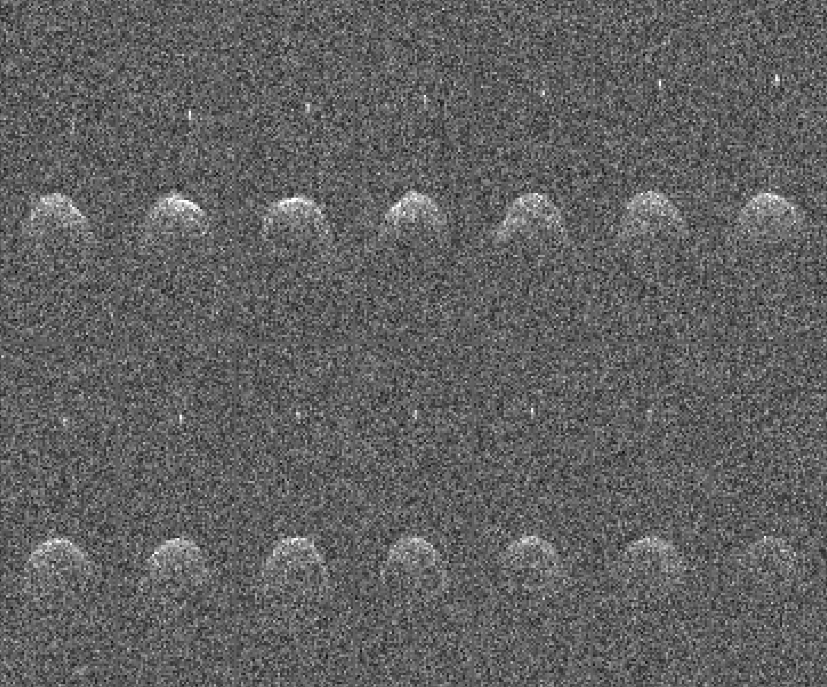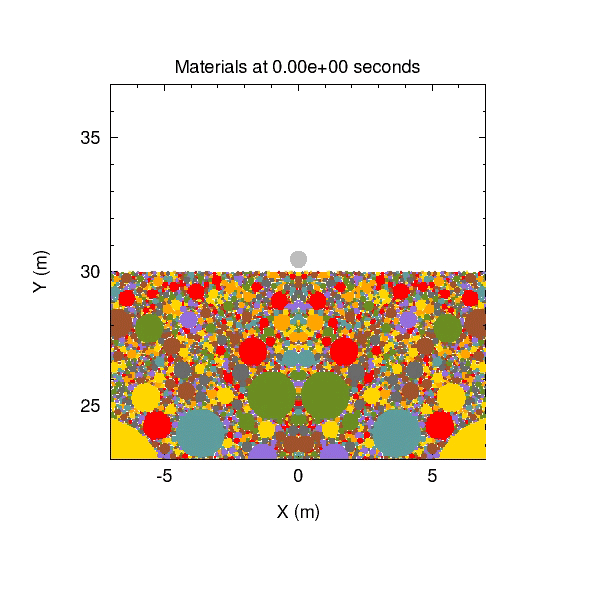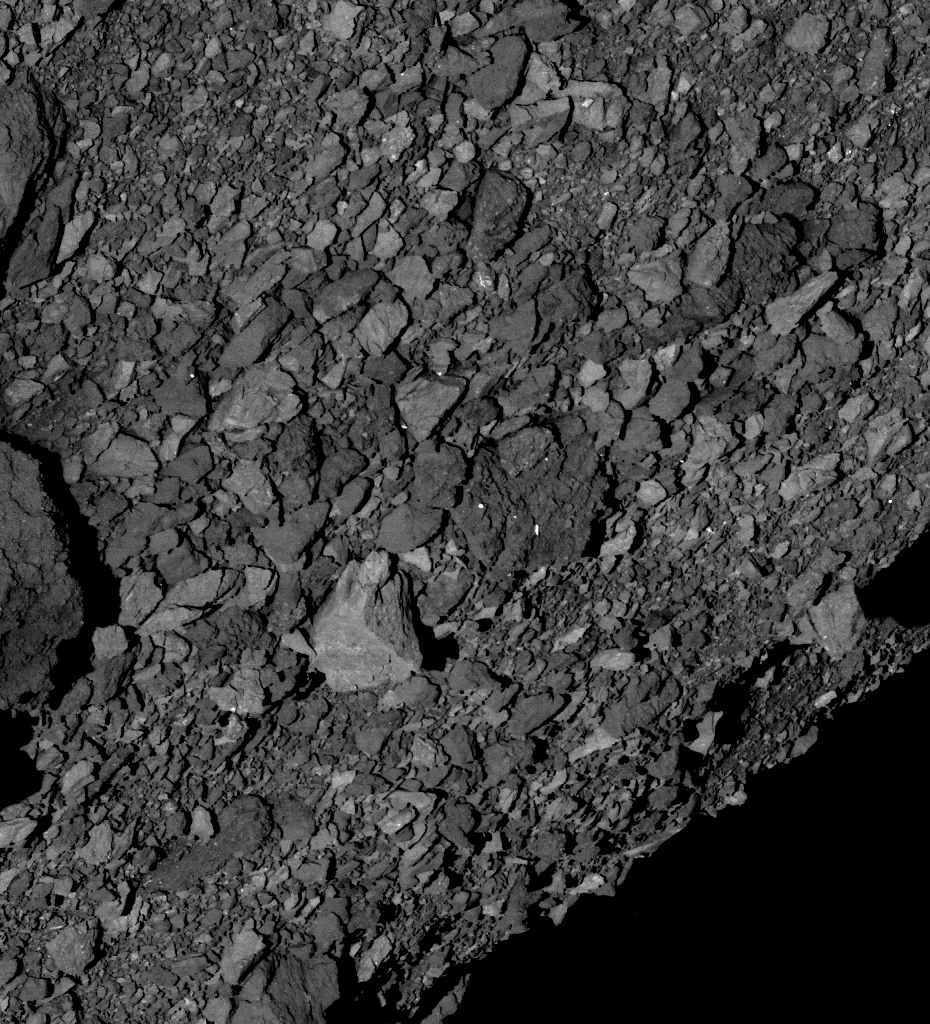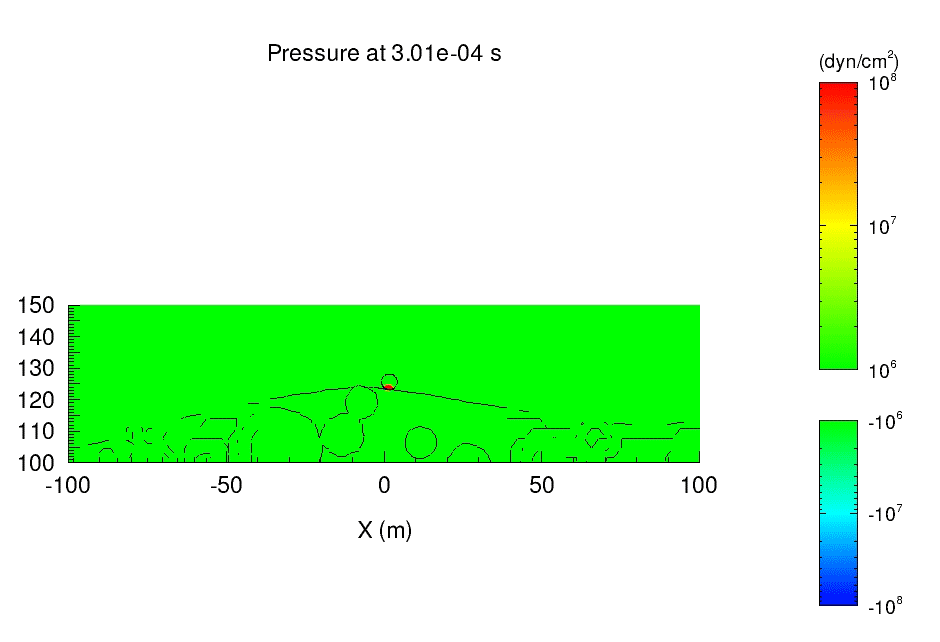News & Resources
07/23/2020
Predicting the Unpredictable
The Dynamics of DART's Dive Into an Asteroid

Illustration of NASA's DART spacecraft and the Italian Space Agency's (ASI) LICIACube prior to impact at the Didymos binary system.
Credit: NASA/Johns Hopkins APL/Steve Gribben
With little known about the asteroid that NASA's DART mission aims to strike, mystery surrounds what will happen after the two collide. Despite the limited data, modelers are determined to narrow the range of possibilities and predict what's almost unpredictable.
In the fall of 2022, NASA's Double Asteroid Redirection Test (DART) spacecraft will reach its destination: asteroid Didymos and its small moonlet, named Dimorphos.
The mission, directed for NASA by the Johns Hopkins Applied Physics Laboratory (APL) in Laurel, Maryland, is a hypervelocity test crash, a one-way trip to demonstrate a planetary defense strategy to thwart an asteroid from hitting Earth.
And Dimorphos, no bigger than a small football stadium, is the target.

Fourteen sequential radar images captured by Arecibo in November 2003 of the near-Earth asteroid Didymos and its moonlet Dimorphos, DART's target. To date, little is still known about both asteroids.
Credit: Arecibo Observatory/NASA
At T-minus 45 minutes — DART can distinguish the two asteroids and starts collecting data, informing its autonomous navigation system — the APL-developed SMARTNav algorithm — to help direct itself toward the target.
T-minus 2 minutes — Only Dimorphos is in view.
T-minus 17 seconds — DART will see the surface in exquisite detail, producing images with resolutions of about 20 inches per pixel.
Five seconds — DART sends the last images back to Earth.
Four — DART's cruising at about 14,800 mph, the surface coming closer.
Three — closer
Two — closer
One…
Boom!
Until the last moment before DART is nothing but a crater on Dimorphos' surface, scientists are pretty certain of what to expect.
After the crash, though, things turn murky. Will DART's crater be a large, noticeable cavity, or a dent in the dust? How much debris will be ejected from the formation of the new crater?
And the most important question: Just how much will DART change the orbital motion of Dimorphos?
In some ways, DART is like a bug smashing into a windshield: the bug splats, the car absorbs the bug's momentum and (washer fluid aside) the two never separate again.
By that analogy, scientists estimate DART's "impact" should change Dimorphos' orbit period around Didymos by about seven minutes, which telescopes on Earth will measure and verify. But the collision is more complicated because between 22,000 and 220,000 pounds of the surface could be ejected to form DART's crater — millions of tiny rocks, each pushing just a little against Dimorphos as they leap into space. The sum of their pushes could substantially enhance DART's effect.
Scientists can approximate this change by comparing the asteroid's momentum after the collision with the spacecraft's momentum before the collision, a proportion neatly packaged in a derived value called "beta." Beta is just a number, but it accounts for the momentum imparted by the spacecraft and the momentum of any debris ejected by any kinetic impactor hitting an asteroid, giving the asteroid an extra push. The larger the value of beta, the larger the change to the asteroid's motion.
"Estimating the beta factor is kind of the big 'holy grail.'"
Researchers want to be able to predict beta and test that prediction with DART, but to do that requires understanding how an asteroid's physical properties affect beta. It also requires knowing an asteroid's physical properties, which for most asteroids — including Dimorphos — are largely unknown.
"Estimating the beta factor is kind of the holy grail," said Angela Stickle, a planetary geologist at APL. She and others on the DART Impact Simulation Working Group are on a crusade to find it.

Simulation of a projectile colliding with the surface of a rubble-pile asteroid, as may happen when DART collides with Dimorphos. This model shows how a rubble pile asteroid can bend and deform during crater formation.
Credit: Johns Hopkins APL/Angela Stickle
Narrowing the Range
The field of possible factors that could affect beta is vast. In an early modeling study that Stickle led in 2015, the group found beta shifted significantly if they altered the impactor's velocity, its collision angle, the target's internal structure or its material properties, such as its strength or toughness. For DART, beta was anywhere from about 1 (no ejecta produced) to more than 5.
Rather than deal with the full laundry list of possibilities, the team has tried to isolate just a few parameters that might matter the most.
"We knew it was going to be a huge range of possibilities to whittle down," Stickle said.
Compounding the issue was that researchers have used at least four different computer codes to model DART's collision. The team needed to study the inherent differences among them to compare and resolve their estimates of beta.
Stickle spent roughly three years with the research teams probing just these differences, subjecting each code to a series of 2D-simulated collisions: a small disc of aluminum or basaltic rock crashing into a square or circle, some tough and porous, others tough and dense, but all spewing a Technicolor cloud of computerized debris and snaking cracks beneath the surface.
"It makes sure everyone is comparing apples to apples," she said. And to some relief, they mostly were. For any given set of parameters, the codes predicted crater sizes and beta values to within about 15% of each other.

A comparison of three simulated collisions of a projectile into asteroids of different kinds of porosity, and the expected beta value and velocity change of the asteroid as a result. Researchers found that porosity, or the amount of empty space in a material, plays a significant role in determining the effectiveness of a kinetic impactor such as DART.
Credit: Johns Hopkins APL/Angela Stickle and Emma Rainey
Applying those models, they found that by altering specifically how strong the asteroid is and how much space lies between the rocks that it's made of, rather than the composition of the rocks themselves, they could significantly change the predicted crater sizes and beta values.
"That means the things that are going to affect beta the most aren't the minerals Dimorphos is made of," Stickle said. "It's going to be about what the subsurface looks like, how porous it is."
Emma Rainey, a physicist at APL and member of the Impact Simulation Working Group, continued on that vein.
In a study published earlier this year, she and the team ran several simulated impacts. DART was always a tiny glob of aluminum that crashes at over 13,000 mph into Dimorphos, which they modeled as a much larger pickle-green sphere of basalt with every combination of material properties — porous or dense, cracked or solid, strong or weak, tough or brittle.
Two parameters seemed to matter the most: Dimorphos' strength, or ability to withstand breaking or bending from the collision, and its porosity. Those factors alone could account for roughly 88% of the resulting beta, which for DART fell between 1.5 and 2, regardless of whether Dimorphos was a rock with many microscopic pores in its interior or a nearly solid body. The debris ejected from the collision in either case could end up pushing against Dimorphos with the same force as DART itself.
"You'd get up to twice the effect on Dimorphos for the price of only one spacecraft," Rainey said.
While that finding certainly narrowed the parameter field, it underscored another uncertainty. "We know only a little about the structure of the asteroid," Rainey said.

Image by NASA's OSIRIS-REx spacecraft capturing the southern hemisphere of the rubble-pile asteroid Bennu. Rubble piles are made of a large conglomeration of rocks, held together by their mutual gravity. Dimorphos is suspected to be a rubble pile, and this image shows the number and distribution of boulders such asteroids can have.
Credit: NASA/Goddard Space Flight Center/University of Arizona
Floating Boulder Fields
Aside from knowing Dimorphos is longer in one direction than another, researchers aren't even sure of Dimorphos' shape, let alone its material, internal or surface characteristics.
Mounting evidence from the past few decades, however, shows many rocky asteroids aren't solid rocks or even rocks containing millions of microscopic pores: They're rubble piles, loose heaps of boulders whose mutual gravity keeps them together. Asteroids such as Itokawa, Ryugu and Bennu are all examples of these floating boulder fields. And because of how scientists believe asteroid moonlets form, many suspect Dimorphos may be one as well.
Dawn Graninger, an APL physicist, ran many simulations of DART crashing into rubble-pile asteroids with tens to hundreds of "rocks" beneath their surfaces. Whether in 2D or 3D, the collision caused those subsurface rocks to explode, erupting in a cloud of debris that burst into space.
Many of the rubble-pile simulations estimated beta to be closer to 2, slightly greater than the previous simulations. But Graninger found that in a rubble pile, beta's value strongly depended on where you hit the asteroid.

Simulation of a projectile crashing into the surface of a rubble pile asteroid. The model shows how the pressures from a collision into rubble piles can disrupt boulders below the surface, causing them to explode and release debris that can contribute to beta.
Credit: Johns Hopkins APL/Angela Stickle
"If you move your impact site by even a meter, that alone can change your beta value by 15%," she said.
That's mostly because rubble pile asteroids aren't just a flat surface with giant rocks beneath it. Everything from microscopic grains to house-size boulders litter their surfaces. By hitting a rock at the wrong angle, or smacking into a smooth region with little porous space, the results could turn out significantly different. And that still discounts the angle at which DART hits Dimorphos, which Graninger said will also alter the beta value.
"It's just hard to imagine what the value is actually going to be," Graninger said. She wonders whether Dimorphos will have a weird shape, making their models only a simplification and mission results harder to predict. "You're just not really going to know until you're there," she said.
A Single Data Point
In reality, that's a problem for any future effort to redirect an asteroid. As of July 20, there are 23,118 known near-Earth asteroids, according to the Jet Propulsion Laboratory's Center for Near Earth Object Studies. Somewhat less than half of those are at least 460 feet (140 meters) across, the bottom benchmark for an asteroid that could cause catastrophic, regional damage. The majority of them we know little about.
To Graninger, that drives home the need for more asteroid missions.
"We currently don't have missions that go and look in detail at these populations of asteroids," she said. "But if we did, it would help with our models and planetary defense."
"We currently don't have missions that go and look in detail at these populations of asteroids. But if we did, it would help with our models and planetary defense."
DART serves a small part in that effort, as a mission that could validate that these models are on the right track, even if details are missing. Data later collected by Hera, the European Space Agency's follow-on mission to the Didymos system, could further hone models for future hypervelocity impact missions and for when the real threat comes.
"If you have confidence that models can predict the momentum transfer for certain properties, it gives you at least something to work off of," Rainey said. "The worst case would be if we end up calculating a beta value after DART's crash that our models can't explain."
She and Graninger have started using more sophisticated models — ones that simulate an actual spacecraft hitting the asteroid. It's a computational lift that will measure cracks and bends in the asteroid happening at scales of fractions of an inch to hundreds of feet. Few computers — even supercomputers — can tackle such detail.
"These spacecraft models are incredibly complicated, with lots of moving parts and lots of material properties to track," Graninger said.
Yet among the team is still an air of optimism. Some trust their models are headed in the right direction. Others trust that between Hera and the LICIACube, a CubeSat built by the Italian Space Agency that is intended to image DART's collision as it happens, they'll have enough additional details to inform their models postimpact.
"We kind of just expect that our initial models are going to be wrong," Stickle said. "But that's how you test models, and we'll have one data point showing we can deflect asteroids at planetary scales. That information will ultimately be critical for future planetary defense research."
